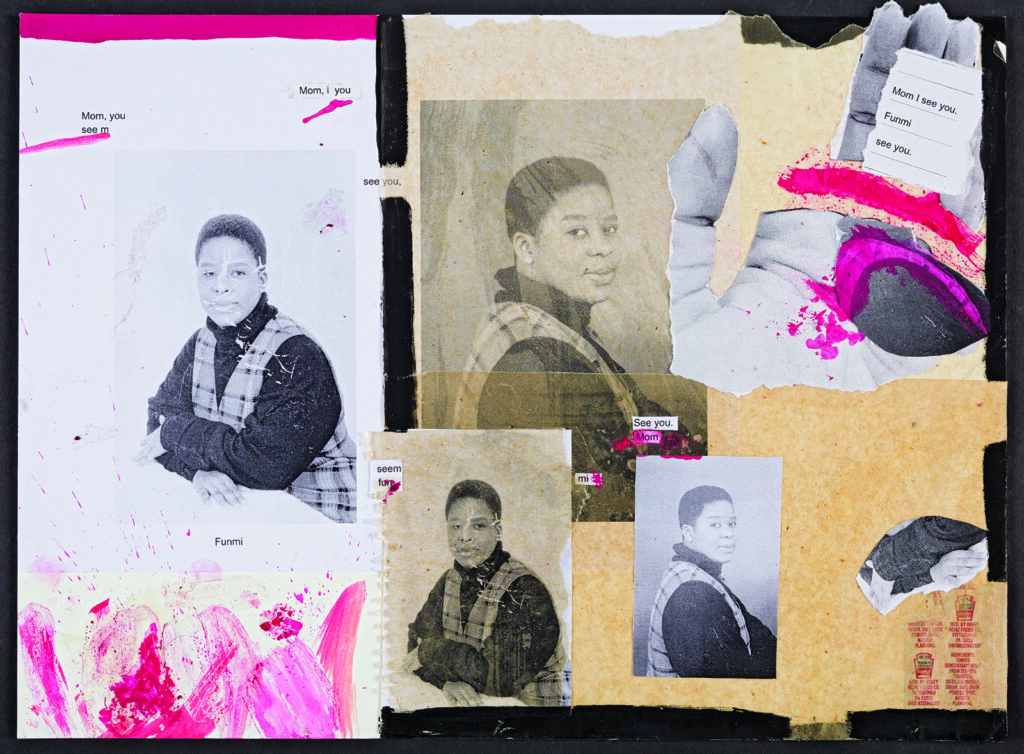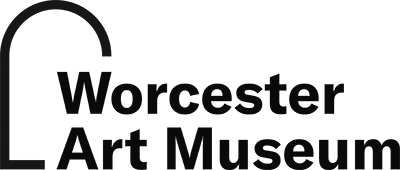The 2022 exhibition Us Them We | Race Ethnicity Identity featured 45 contemporary artists exploring diverse perspectives and experiences around identity. Organized around four formal artistic devices used since the mid-1970s to address socio-political concepts, Us Them We included photographs, prints, paintings, and sculptures from the Museum’s collection, along with several significant loans. Us Them We was cocurated by Nancy Kathryn Burns, Stoddard Curator of Prints, Drawings, and Photographs at the Worcester Art Museum, and Toby Sisson, Associate Professor and Program Director of Studio Art at Clark University. One of the featured artists was Nyeema Morgan of Chicago. Morgan’s mixed media and installation works incorporate text-based media, sculptural elements, and drawing, and focus on how meaning is constructed and communicated given complex sociopolitical systems. Here, Morgan responds to questions posed by Burns about the artist’s creative approach and how she uses text as a device to address identity in her work.
NB: This exhibition is organized with the premise that various aesthetic approaches, specifically text, juxtaposition, pattern, and seriality, can serve to strengthen narratives about race and ethnicity, even in the case of abstraction. What are your thoughts about this idea?
NM: I can speak about the ways aesthetic approaches strengthen narratives in my work, but first I want to acknowledge that this is an American exhibition featuring works by American artists in an American institution in the Northeast where the tenets of American democracy were established. When we discuss race, ethnicity, and identity within this context, an integral part of that conversation is the socio-political, philosophical dialectic of Blackness and Whiteness (or Whiteness and “Otherness”). I consider myself an “identity artist” (among many things), not because I’m an African American artist, but because my work is concerned with soft articulations of power within our economically motivated, racial caste system. Such articulations are seeded in the symbolic resonance of the abstract. When I create, I lean heavily on text as a form of representation, as well as patterns of progression … which in turn move me through the work and my ideas. My use of patterns of progression and text is less of a “formal strategy” and more so a practiced acknowledgment of continuity—of the fluidity and malleability of being. It’s a philosophical grounding, a familial consciousness—a “survival strategy.” For me, this continuity and malleability of form, thought, expression, and material is a rejection of permanence, which creates space for me to acknowledge that there is indeed another way to be present and engaged with the world.
NB: Your work is included in the Text section. How do you feel Text is a useful device when addressing identity?
NM: Text is a visual representational form and the narrative use of text (in advertisements, literature, and beyond) is politically charged, with the stories we’re taught functioning allegorically, serving a dominant ideological superstructure. Text as a form, especially printed text, has an authoritative weight. Standardized typography is meant to be formally neutral, to be legible, and widely proliferated. Whereas, the handwritten text in my drawings is warmer, more personal. The visual elements in my works are graphic, embodying that cool, objective, authoritative resonance but are also paired with a gesture or form which is more idiosyncratic. Building on my previous response about aesthetic approaches and narrative, text offers another way for me to think about representation with a specific focus on identity. Not just the politics of racial identity, but identity as a signifier for a being. In Ancient Egyptian metaphysics, a person’s being had many components, one of which was ‘Ren’—their identity or name. With this body of drawings, the benefit for me as the maker in bringing text into the work is that it operates as both an evocation and as a formal element within the drawing. My aim is to learn about the ways we communicate with each other by untangling and reconciling the impact of text as an aesthetic form along with images and objects.
Contemporary Directions
In conjunction with Us Them We | Race Ethnicity Identity, the curators co-taught an advanced studio course, “Contemporary Directions” at Clark University in spring 2021. Thirteen Clark students explored the topic of identity and created artworks in response to objects featured in the exhibition. These works were displayed in an ancillary gallery. Shown below is Tobi Pitan’s response to Nyeema Morgan’s screenprint.
“As the child of Nigerian parents, I recognize the subtle yet frequent ways immigrants are devalued and erased. In Hands in Hand, words are underlined in red to reference digital software which “auto corrects” perceived errors into conformity. I counter these biases with repeated images of my mother, an emphatic restatement of her presence and importance in my life. Similarly, Nyeema Morgan’s Dear Arlene (Mom) lists the names of multiple Black artists, starting with her mother’s name. The frame is hung askew denoting the historic marginalization of Black artists, but this angle realigns the list and thus recenters it to a place of prominence.”
—Tobi Pitan

This article was featured in the spring 2022 edition of the Worcester Art Museum’s access Member magazine.
Us Them We | Race Ethnicity Identity February 19, 2022–June 19, 2022


